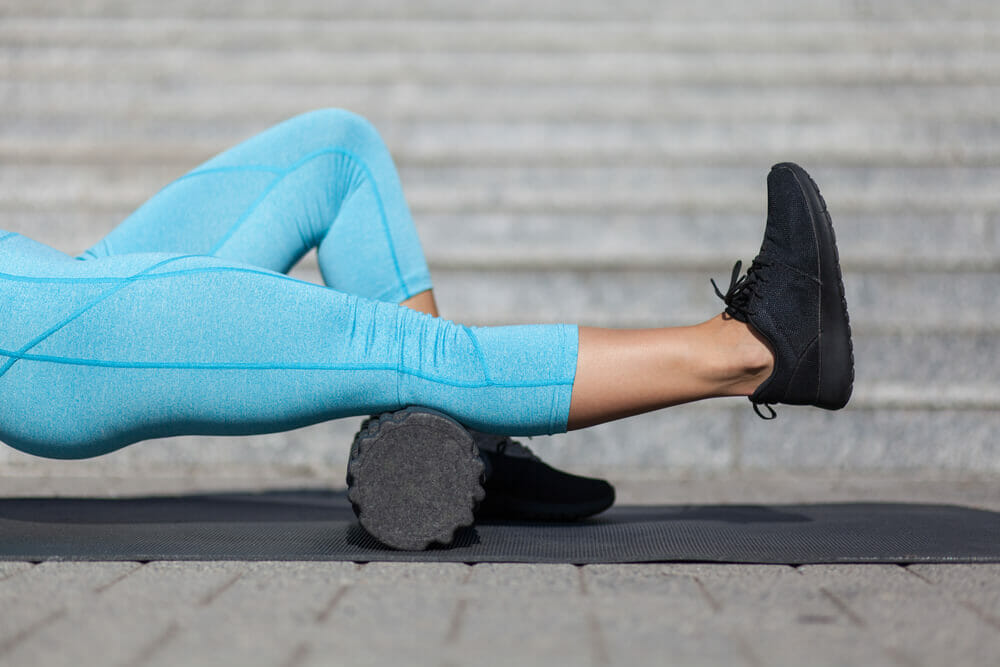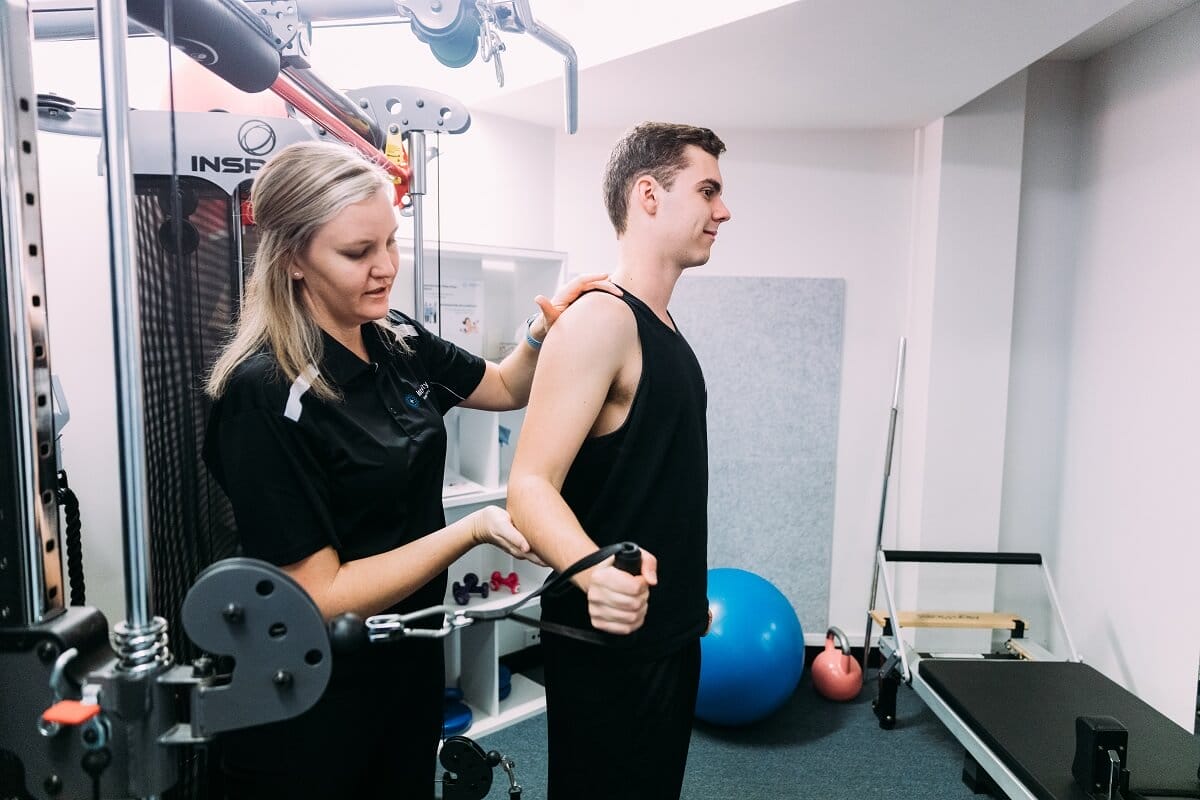
Leanne demonstrates a few techniques for releasing tension in the posterior chain using a foam roller. Use these techniques to loosen up your calves, hamstrings & buttocks.
The posterior chain is an important and powerful group of muscles in the back of the hips, thighs, legs and spine. From your calf muscles, hamstrings, gluteals, and lower back, this group is critical for explosive movement when running, jumping, and lifting. It’s performance affects the hip, knee and spine, providing stability and power. Ensuring this large group of muscles are working well will assist with normal mobility and overall physical capacity.
As always, it’s best to consult a professional physiotherapist when experiencing issues with this region. With Integrity Physio providing support with posterior chain rehab, finding a physio near me has never been easier.
What Are Weak Posterior Chain Symptoms?
A weak or imbalanced posterior chain can be the cause of various health problems including knee, hip, and lower back pain. There is also an increased chance for injury when these muscle groups are either unbalanced or weakened in any way. With that in mind, here are some common symptoms to look out for:
- Pain – Regular low grade pain or tightness in the lower back, hips and knees. Watch out for symptoms early on as they can progress over time especially if you are unable to correct the pain by changing your training regime or form. Always ensure good form and technique when training this group of muscles. If you are unsure, seek competent advice.
- Fatigue – a weak posterior chain will cause the body to compensate during a variety of movements. This can cause irritation and inflammation to nearby joints and other soft tissues as well as excessive fatigue in certain muscles groups that are working too hard.
- Slouching – you might notice a change in posture or pain developing in your hips or lower back with tasks such as sustained sitting or standing. Your posterior chain plays a role in endurance contractions to maintain postural uprightness. Staying strong in the posterior chain can help with reducing pain from prolonged postures.
Top 3 Foam Roller Exercises For The Posterior Chain
As you begin to work your posterior chain or if there is imbalance in certain components you will need some help releasing some of the tension. Relieving tension throughout your posterior chain is super easy and can feel amazing when you do it right. Here’s Leanne’s top three foam roller exercises to get you more comfortable.
1. ‘Calf Exercise’
Sitting on the ground with your foam roller under your calves, rest it there and apply pressure, or actively roll your calves up and down by bending both your knees. Focus the attention on one leg and apply extra downward pressure by placing the other leg on top.
If you’re up to it – lift your body off the ground for more range of motion and increased pressure on the calves.
2. ‘Hamstring Exercise’
Bring the foam roller up just above the knee. Using your palms on the ground roll it towards your hip. Try to feel for the tight spots. Pause and focus the roller to massage these areas more deeply.
3. ‘Buttock Exercises’
Place the roller underneath you so you’re sitting on it. Then with one leg over the other for stability, roll your body 45 degrees so it sits between your hip and waist. Using your foot push your body up and down and target the sensitive areas in your buttocks.
Don’t Have A Foam Roller? Try These Posterior Chain Exercises
Using a foam roller is one option to relax and relieve the posterior chain but if you can’t access a foam roller here are 3 exercises to try out at home or in the office:
1. Warm-Up
It’s great to start a routine with a warm-up to get the blood moving and your muscles limber. This one starts on your back; lift one leg and draw circles in the air before bringing it down. Do the same with the other leg and repeat 5 more times.
2. Downward Facing Dog
This yoga staple move is the basis for many routines – it’s also fantastic for activating and stretching the posterior chain. Start on all fours and with your hands under your shoulders, knees hip-width apart, lift your hips and back as high as you can to make a triangular shape with your body.
3. Reverse Tabletop
Start by sitting on the ground – legs out in front and hip-width apart. With your palms firm on the ground by your side and fingertips facing backward, lift your buttocks to the sky and keep your knees at a right angle. Engage your glutes instead of your lower back for this one. Not sure or uncomfortable, seek professional advice.
Gym Exercises To Strengthen Your Posterior Chain
Gym goers will probably be familiar with the importance of keeping your back and hip muscles strong and this really can’t be said enough. Maintaining a strong posterior chain is all about building up balance and strength across this significant group of muscles – not just repeating the same exercises over and over again. Here’s a couple of exercises to include in your next workout:
- Lunges are a great way to start training this region. It’s a great way to warm up as well, so include it wherever possible and you’ll feel more resilience and mobility build up over the long term.
- Kettlebell swings are great for building strength throughout the lower back, glutes, and hamstrings – the big dogs of the posterior chain. Make sure you’re aware of how to do this exercise properly before throwing yourself into it. It’s a great exercise but dangerous if done poorly.
- Back squats engage each separate region of the posterior chain. From your back to your hips and calves – it’s an all-rounder strengthening exercise.
If pain persists, please consult a health professional. Our experienced physios are highly experienced in treating leg discomfort, so please don’t hesitate to book a physio appointment and get a professional opinion. For a hassle-free consultation talk to our team at Integrity Physio today.



